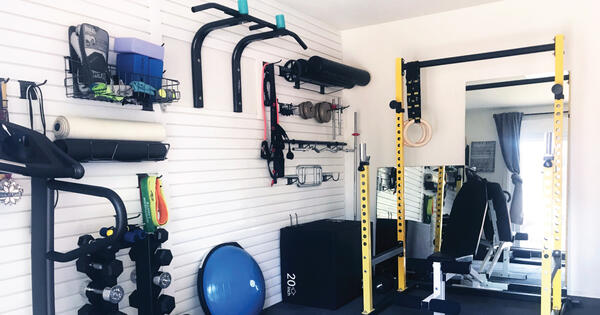A cluttered storage shed isn’t just frustrating — it’s inefficient and even unsafe. When tools, gardening supplies, and seasonal items pile up without a system, it’s hard to find what you need when you need it. Wasted space means less room for essential equipment, and loose items on the floor can become tripping hazards.
A well-organized shed, on the other hand, makes every task easier. Whether you're tending the garden, tackling a DIY project, or storing outdoor gear, knowing exactly where everything is saves time and hassle. Plus, keeping things off the floor and neatly arranged protects your tools from damage, extends their lifespan, and maximizes the available storage space. With a solid organization plan, your shed can become a functional extension of your home — not just a place to stash things out of sight.
Assessing Your Storage Shed Organization Needs
Before diving into shed organization, it’s important to take stock of what you actually need to store. Over time, sheds tend to accumulate everything from old paint cans to broken tools, making it easy to lose track of what’s useful and what’s just taking up space.
Start by sorting through everything inside the shed:
- Keep items that you use regularly or seasonally and are in good condition.
- Donate or sell anything you haven’t used in a year, duplicates of the same tool, or items that could be useful to someone else.
- Discard broken, rusted, or expired materials that no longer serve a purpose.
Once you’ve pared down your belongings, categorize what remains to make storage easier:
- Tools and hardware: Hand tools, power tools, nails, screws, and other fasteners.
- Gardening supplies: Hoses, shovels, fertilizer, and plant pots.
- Outdoor gear: Camping equipment, folding chairs, and recreational items.
- Seasonal items: Holiday decorations, patio furniture cushions, or winter gear.
- Hazardous materials: Fuel, pesticides, and chemicals that require careful storage.
As you sort, think about how much space each category requires. If certain items are large or frequently accessed, they may need dedicated zones. Shelving, hanging storage, and modular systems can help make the most of the available square footage while keeping everything easily accessible.


Maximizing Vertical Shed Storage with Trusscore SlatWall
Storage sheds often lack floor space, making vertical storage essential for keeping things organized and within reach. That’s where Trusscore SlatWall comes in — a durable, easy-to-install solution that transforms shed walls into efficient storage areas.
Trusscore SlatWall is a high-strength PVC wall storage system that allows you to mount hooks, baskets, and shelves directly onto the wall. Unlike pegboard, which can sag under heavy loads, Trusscore SlatWall is built to handle weight while maintaining a clean, modern look.
By getting tools, equipment, and accessories off the floor, Trusscore SlatWall:
- Creates more usable space: Free up the floor for larger equipment like lawnmowers and workbenches.
- Keeps everything visible and accessible: No more digging through piles or shifting items to reach what you need.
- Provides flexible storage options: Easily move and rearrange accessories as storage needs change.
Trusscore SlatWall is compatible with a variety of storage accessories, including:
- Hooks: Ideal for hanging shovels, rakes, ladders, and extension cords.
- Shelving: Perfect for small bins, paint cans, and gardening supplies.
- Baskets: Great for storing gloves, seed packets, and other small items.
- Tool holders: Designed to keep drills, hammers, and hand tools neatly arranged.
Trusscore SlatWall is lightweight, interlocking, and installs with basic tools. It can be mounted directly onto studs or over existing drywall or plywood, making it a practical upgrade for any shed — whether you’re starting from scratch or looking to improve an existing space.
By using Trusscore SlatWall, homeowners can transform their shed walls into efficient storage zones, eliminating clutter and making every tool and piece of equipment easy to find.
Utilizing Your Shed’s Wall and Ceiling Space Efficiently
When floor space is limited, the walls and ceiling of your shed become valuable storage real estate. By taking advantage of vertical and overhead space, you can keep tools and equipment neatly arranged while ensuring everything remains easily accessible.
There are several wall-mounted storage options to help keep your shed organized:
- Shelving units: Ideal for storing bins, small tools, and frequently used items. Choose sturdy, adjustable shelves for flexibility.
- Pegboards: A cost-effective way to organize hand tools, gardening gear, and accessories with customizable hooks and baskets.
- Magnetic strips: Great for keeping metal tools, such as screwdrivers and pliers, within easy reach.
- Mounted tool racks: Designed for rakes, shovels, and brooms, ensuring long-handled tools stay off the floor.
To store heavier items safely, follow these guidelines:
- Use heavy-duty wall anchors if mounting onto drywall or plywood.
- Secure shelving and racks into studs to provide maximum support.
- Distribute weight evenly across shelves to prevent tipping or sagging.
- Choose reinforced brackets for added stability when storing large or heavy equipment.
Ceiling storage is a great way to make use of every inch of space. Consider these overhead solutions:
- Hanging racks: Perfect for lightweight, seasonal items like holiday decorations or camping gear.
- Pulley storage systems: Ideal for bikes, ladders, or kayaks, allowing you to lift and lower items as needed.
- Ceiling-mounted shelves: A great option for storing less frequently used items while keeping them accessible.
By incorporating both wall and ceiling storage, you can maximize your shed’s capacity while keeping the floor clear for larger equipment.



Smart Shelving and Cabinetry Solutions
A well-organized shed relies on the right combination of shelving and cabinetry. Choosing the best storage solutions can help keep clutter at bay while maximizing every inch of space.
Not all shelves are created equal — consider these options based on your storage needs:
- Metal shelving: Strong and durable, ideal for holding heavy tools or containers.
- Wooden shelves: A budget-friendly and customizable option, but may require additional reinforcement.
- Plastic shelving: Lightweight and resistant to moisture, making it great for outdoor storage.
Freestanding and wall-mounted shelves each have benefits, depending on your shed’s layout:
- Freestanding shelves are flexible and easy to move, making them ideal for renters or those who frequently rearrange their storage.
- Wall-mounted shelves save floor space and provide a more permanent storage solution, keeping items off the ground and within easy reach.
Shelves can quickly become disorganized without a system in place. Keep things tidy by:
- Using labeled storage bins to group similar items together.
- Placing frequently used items at eye level for easy access.
- Adding dividers or baskets to keep small tools or accessories from piling up.
- Rotating seasonal storage so that off-season items aren’t taking up prime shelf space.
By choosing the right shelving and cabinetry, you’ll create a storage system that works for your needs while keeping clutter under control.
Tool and Equipment Organization for Your Shed
An organized shed isn’t just about storing tools — it’s about making them easy to find and use. Properly arranging garden tools, power tools, and seasonal items can save time and prevent damage.
Garden tools should be stored in a way that keeps them within reach while preventing rust or damage. Some effective storage methods include:
- Wall-mounted racks: Keep rakes, shovels, and hoes upright and off the floor.
- Magnetic tool holders: A great option for smaller metal tools like shears and trowels.
- Buckets filled with sand and mineral oil: Helps keep hand tools clean and rust-free.
- PVC pipe holsters: Attach cut sections of PVC pipe to the wall for simple, DIY tool storage.
Power tools should be stored securely to protect both the tools and the shed’s occupants. Consider:
- Wall-mounted shelves or SlatWall: Keeps drills, saws, and sanders visible and easy to grab.
- Battery and cord management: Use labeled bins or hooks to keep chargers and extension cords organized.
- Lockable cabinets: Ideal for storing high-value tools to prevent theft or unauthorized use.
Storing seasonal items like holiday decorations or patio furniture can quickly become chaotic if not managed properly. To keep things organized:
- Use clear, labeled bins to identify what’s inside without opening them.
- Store patio cushions in vacuum-sealed bags to save space and protect against moisture.
- Place seasonal bins on high shelves or in ceiling-mounted racks to keep them out of the way when not in use.
- Rotate storage so that current-season items are always the most accessible.
By implementing smart storage solutions, you’ll ensure that your tools and equipment are always ready to use, making shed organization a breeze.
Maximizing Floor Space & Creating Clear Pathways in Your Shed
A cluttered shed isn’t just frustrating — it can be a safety hazard. Keeping the floor clear ensures you can easily access your tools and equipment without tripping over misplaced items. By making smart storage decisions, you can maximize every inch of available space.
The key to keeping the floor clear is prioritizing vertical and ceiling storage while designating a proper place for every item. Some effective strategies include:
- Installing wall-mounted storage: Use Trusscore SlatWall, pegboards, and shelving to keep smaller tools and accessories off the floor.
- Using stackable storage bins: Keep similar items grouped together in labeled, stackable containers to avoid piles of miscellaneous clutter.
- Creating a dedicated drop zone: Set up a small entryway area with hooks and shelves for items you use frequently to prevent them from being left scattered on the floor.
- Regularly purging unused items: If you haven’t used something in a year, consider donating, selling, or discarding it.
Bulky equipment like lawnmowers or bikes can take up valuable floor space, but the right storage solutions can keep them out of the way while still easily accessible:
- Use wall-mounted bike racks: Hanging bikes vertically or horizontally on the wall saves floor space and keeps them organized.
- Install ceiling-mounted hoists: Pulley systems allow you to lift and store lightweight items like kayaks or ladders overhead.
- Designate a specific parking zone: Keep large items like lawnmowers or wheelbarrows against the back wall or in a corner, using wheel chocks or guides to prevent them from shifting.
By keeping your shed’s floor space open and pathways clear, you’ll create a safer, more functional space where everything is easy to find.


Small Storage Hacks for a More Efficient Shed
Even in the smallest sheds, there are plenty of creative ways to make the most of the space. With a few clever organization hacks, you can keep everything neatly stored without sacrificing accessibility.
When space is limited, every inch counts. Try these simple but effective ideas:
- Use magnetic strips: Attach a magnetic strip to the wall to store metal tools like screwdrivers, pliers, and wrenches within easy reach.
- Repurpose old containers: Coffee cans, mason jars, and spice racks make great storage solutions for small items.
- Hang a shoe organizer: Clear plastic shoe organizers can be used to store spray paint cans, gloves, seed packets, and other small items.
- Mount PVC pipe holders: Cut sections of PVC pipe and attach them to the wall to hold long-handled tools, screwdrivers, or even extension cords.
Tiny items like nails, screws, and cords are easy to misplace, but these solutions can help keep them organized:
- Use labeled tackle boxes: Small compartments make it easy to separate different sizes of nails, screws, and bolts.
- Install a pegboard with small bins: Hanging labeled bins on a pegboard keeps everything visible and easy to grab.
- Wrap cords around hooks or reels: Avoid tangled extension cords by hanging them on hooks or using retractable reels.
These simple tricks will help make even the smallest shed feel more spacious and functional.
Keeping Your Shed Organized Over Time
A well-organized shed doesn’t stay that way on its own — it requires ongoing maintenance. By building good habits and setting up a system that works for your needs, you can keep clutter from creeping back in.
Regular upkeep prevents your shed from becoming overwhelming. Consider:
- Quarterly clean-ups: Sort through items every few months and remove anything that’s broken, outdated, or unused.
- Seasonal swaps: Rotate storage as the seasons change — store summer gear in winter and vice versa.
- Annual deep clean: Once a year, take everything out, sweep the floor, wipe down shelves, and reassess storage needs.
Staying organized is easier when you make it part of your routine. Some simple habits include:
- Putting items back after each use: Avoid leaving tools or supplies lying around by returning them to their designated spots.
- Keeping a small trash bin inside: This makes it easy to toss out packaging, broken parts, or debris before they pile up.
- Doing a quick weekly tidy-up: Spending five minutes at the end of each week to straighten up will prevent bigger messes down the road.
Beyond organization, keeping your shed in good condition by performing regular maintenance ensures it remains a functional space:
- Check for leaks or moisture buildup: Prevent mold and rust by sealing any leaks and using moisture absorbers.
- Inspect shelving and storage systems: Tighten loose screws, reinforce brackets, and replace any worn-out storage solutions.
- Keep pests out: Regularly check for signs of rodents or insects and seal gaps where they could enter.
With these maintenance tips, your shed will stay clean, organized, and efficient all year round.
A well-organized storage shed isn’t just about tidiness — it’s about maximizing space, making tools and equipment easy to find, and keeping the area safe and functional. Whether you’re tackling a complete shed overhaul or just making a few strategic upgrades, the key is to create a system that works for your needs.






